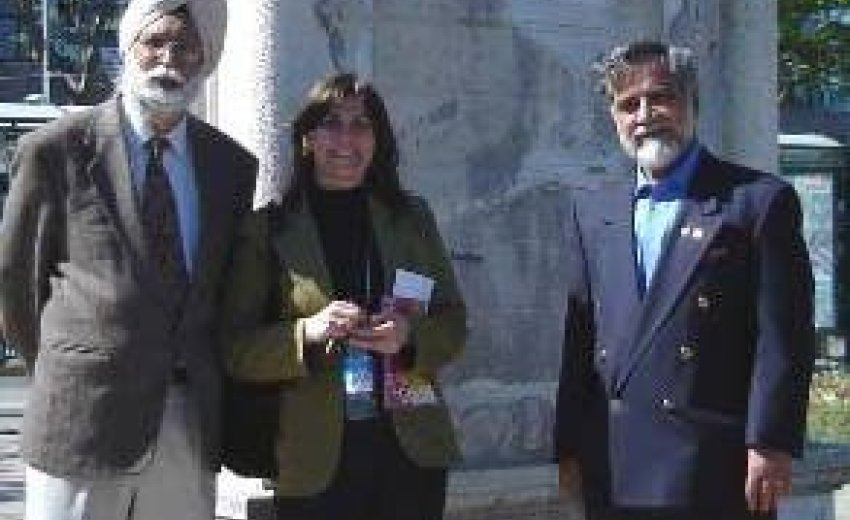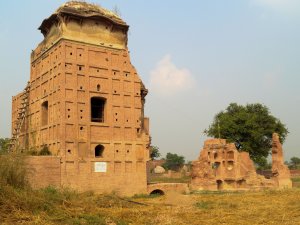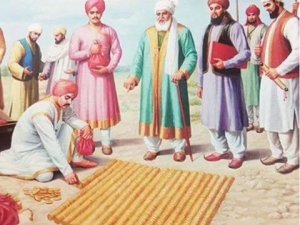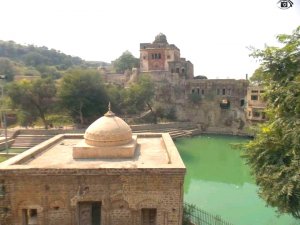THE INSCRIPTION IN ISTANBUL (TURKEY) WRONGLY ATTRIBUTED TO GURU NANAK
My interest in Sikh and Punjab history takes me to number of books and journals written by eminent historians. In last few years there have been reports on Sikh websites and in Punjabi newspapers regarding Guru Nanak's visit beyond Makkah (Mecca) and Baghdad. Sadly most of them are based on anecdotal evidence however one of them stands out. It has compelling evidence and researched very aptly by Professor Devinder Singh Chahal (Retired Prof of Microbiology) of Institute of Understanding Sikhism, Quebec, Canada. Guru Nanak's visit to Turkey based on inscriptions found in its capital Istanbul got me much enthusiastic and I started reading material about it. All Sikh websites are unanimous that Guru Nanak visited Turkey based on Prof Chahal's research journal published in 2006. I was able to find couple of other journals published after 2006 by Prof Chahal on the subject which clarified every query I had on the subject. Interestingly these journals have been ignored by Sikh websites. Inscription found in 1994 Prof Chahal writes that in 1994 while attending a conference in Turkey, he found a moment 15 X 6 feet wide, constructed of mortar, situated in a public park at the shore of the Straits of Bosporus towards Istanbul. The inscription was in Arabic/Persian script and he was able to read 'Nanak' at the end of first line of inscription. The bulk of the inscription was not legible due to weathering affects and also the cracks which were filled with cement. He took a picture of it from his camera. When he came back to Canada he consulted couple of people but they were unable to help him in deciphering the inscription. It may be mentioned here that Turkey replaced their Turkish- Ottoman (Arabic/Persian) script to Latin in 1926. This may explain the difficulty in deciphering the script which is no longer in current usage except among few academic circles. Initial decipher of Inscription in 2006 The research remained dormant for 12 years till Prof Chahal attended the International Conference on Guru Nanak Heritage for Peace on February 2006. At the conference, Iqbal Kaiser, author of the famous book 'Sikh Shrines in Pakistan' and Syed Afzal Haider, Senior Advocate of Supreme Court in Pakistan and author of the book 'Baba Nanak' helped Prof Chahal to decipher the first line of the inscription which was in Turkish language. (Transliterated and translated in Gurmukhi & English) ਜਹਾਂਗੀਰ ਜਮਾਂ ਹਿੰਦ ਲਤ ਅਬਦ ਅਲ ਮਾਜੀਦ ਨਾਨਕ । Following his return to Canada, Prof Chahal wrote a journal article 'Monument of Guru Nanak in Istanbul, Turkey, a new discovery' which was published in 'Understanding Sikhism, the Research Journal' in October 2006. This remarkable discovery was widely published and reported in newspapers in Punjab and on Sikh websites. Visit to Turkey in 2007 After raising some funds, Prof Chahal and Dr Avtar Singh Dhaliwal, set out during May 2007 on a project to prove if the word 'Nanak' in the inscription on a monument discovered in 1994 on the shore of Straits of Bosporus, Istanbul, Turkey, where the East meets the West, is for Guru Nanak or it is something else. Monument relocated The team of Prof Chahal and Dr Dhaliwal were able to find the monument which was relocated at the seashore of European side at Iskelesi Kabatas near a Mosque and Dolmabahce Palace. The relocation indicated some inscription on the back of the monument which was much clearer. Final decipher of the inscription The inscription was deciphered as one made by Emperor Abdul Majeed Khan in 1850 who ruled Ottoman Empire from 1839-61. Later further research by the team and other researchers deciphered that the word 'Nanak' is in fact KHANIK[N] in which the hook of Arabic alphabet 'Khey' was damaged due to weathering agencies thus everybody who looked at it was reading that word as 'Nanak'. The word KHANIK[N] means "of Khan". This conclusion was accepted after consulting many experts of the Faculty of Divinity of Marmara University and the Department of Archaeology of Istanbul. Prof Chahal wrote that the Department of Archaeology told them that during Ottoman Empire no monument could be constructed of any person other than that of Emperor. Therefore, the possibility of this monument for Guru Nanak is next to impossible. Similarly, their research could not find any clue about the visit of Guru Nanak to the shrine of Mevlana (Maulana) Jalaluddin Rumi in Konya. Research on other references The team went to Research Centre for Islamic Studies, the biggest in the country and tried to find a reference given by Tarlochan Singh in his book Guru Nanak: Founder of Sikhism published by Gurdwara Parbandak Committee, Sis Ganj, Delhi in 1969. In this book the author had given a reference and indicated that Guru Nanak met Emperor of Rum, Salim (1511-20) at Cairo or Istanbul. Tarlochan Singh had quoted 'Sydney Nettleton Fisher: The Middle East: A History. p 206 39 JMS (LI) 281'. The above reference was found to be partially incorrect. No journal of this nature existed however a book 'The Middle East: A History' by Sydney Nettleton Fisher published in 1979 was found. The portion dealing with Emperor Salim Khan did not contain anything about Guru Nanak in the book. Prof Chahal laments that how much time is wasted to find out incomplete references which are common practice among some Sikh scholars. Achievement of the Project 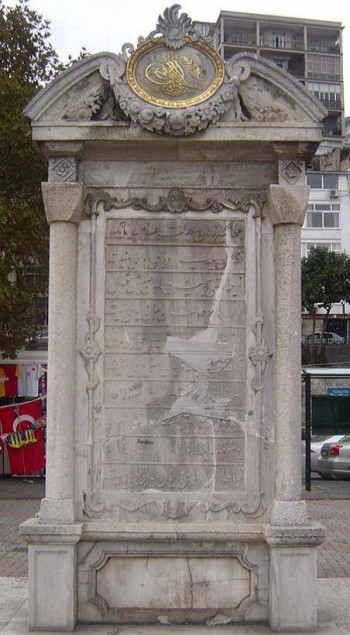
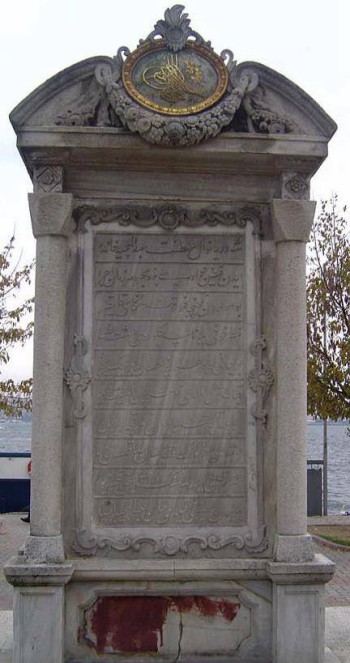
(Left) Inscription found in 1994 and (Right) Inscription found in 2007 - reverse of the picture on the left.
(Jehangir jaman hind lat abd al majid Nanak)
ਜਮਾਨੇਦਾ ਮਾਲਕ, ਹਿੰਦ ਦਾ ਬੰਦਾ,ਰਬ ਦਾ ਨਾਨਕ ।
(jamanay-da malik, hind dabanda, rab da Nanak)
The Lord of the time, resident of India, Nanak the man of God.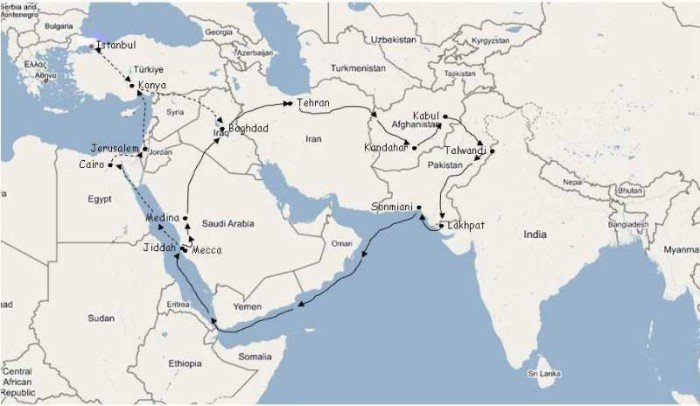
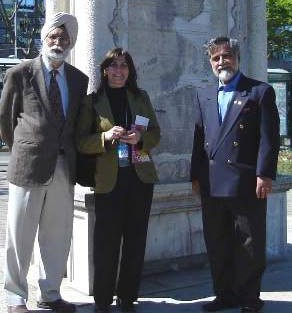
Dr Chahal (left) with Turkish Academician and Dr. Dhaliwal
Editor's note: This article was written by Inderjeet Singh ([email protected]) strongly based on the research of Dr. Chahal Singh.
Source:
Chahal, Devinder Singh. Monument of Guru Nanak in Istanbul, Turkey, A new discovery 23rd October 2006 Understanding Sikhism - The Research Journal
Chahal, Devinder Singh. Research Project DID GURU NANAK TRAVEL UP TO ISTANBUL, TURKEY? PREAMBLE July - December 2007, Vol. 9, No 2 page 5 Understanding Sikhism - The Research Journal
Chahal, Devinder Singh & Dhaliwal, Avtar Singh. Research Report DID GURU NANAK TRAVEL UP TO ISTANBUL, TURKEY? Where East Ends & West Starts. July - December 2007, Vol. 9, No 2 page 7 - 23 Understanding Sikhism - The Research Journal

